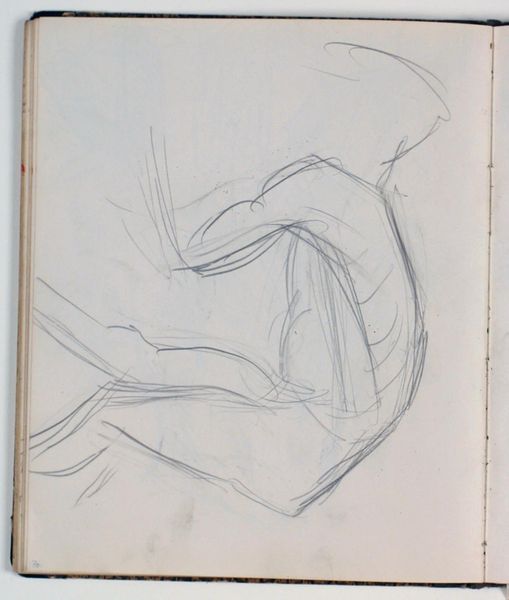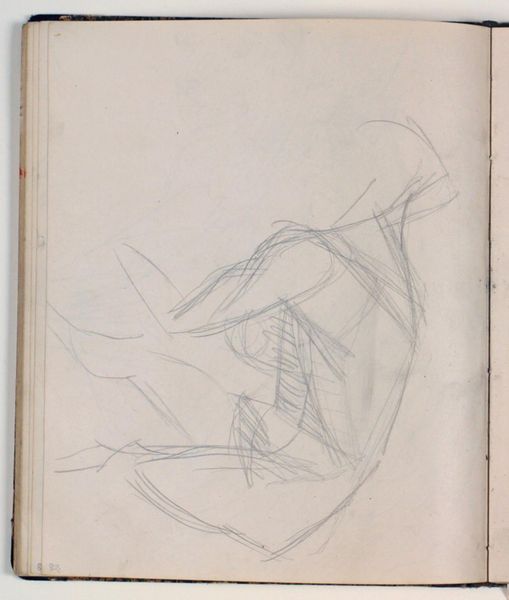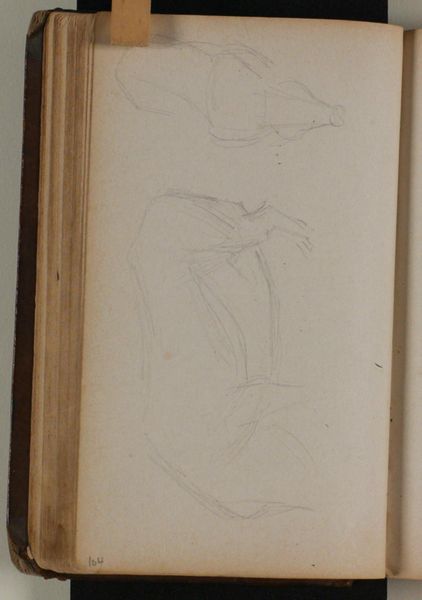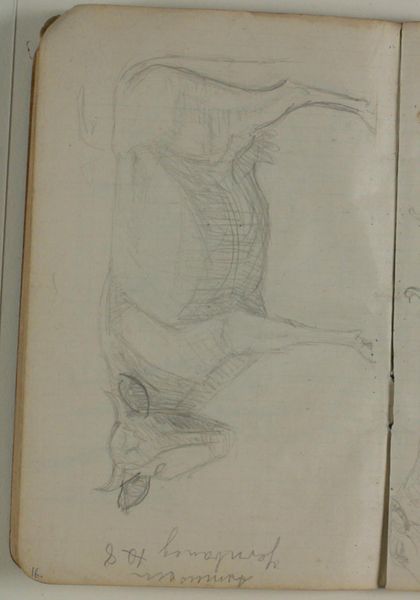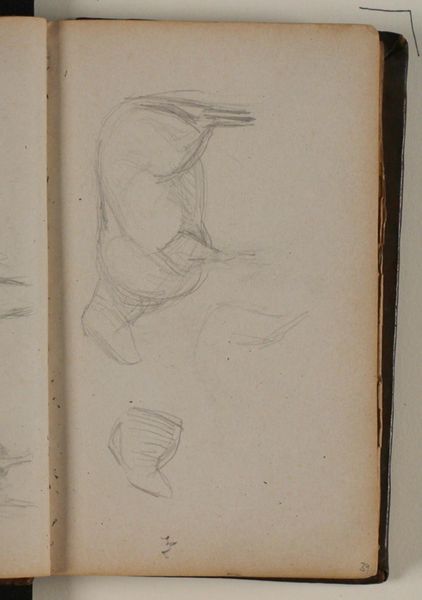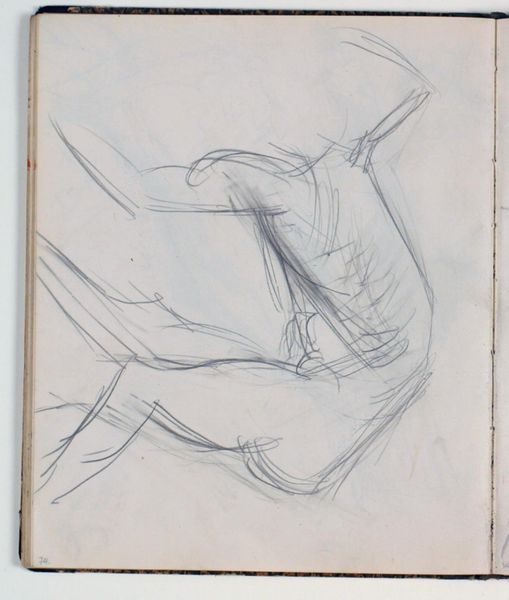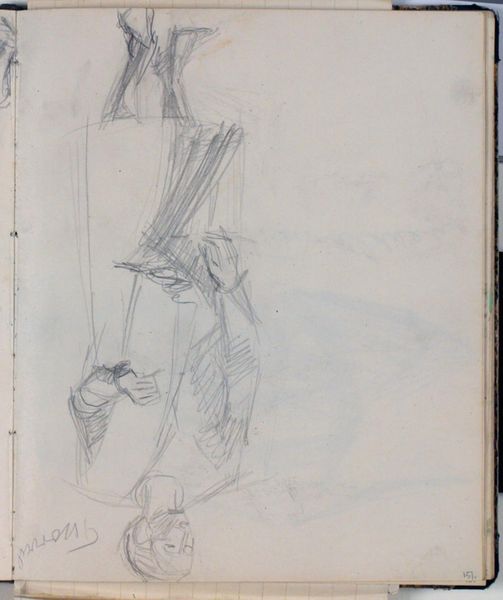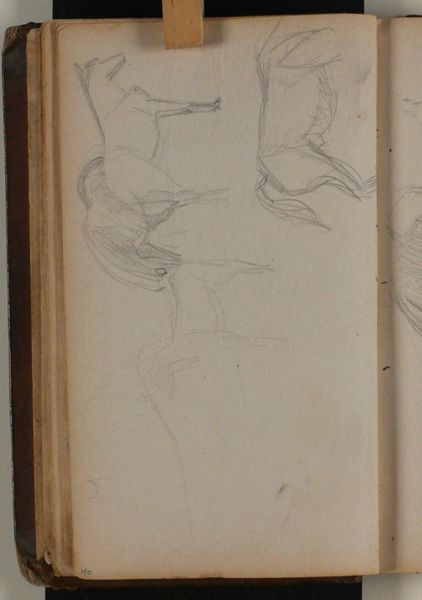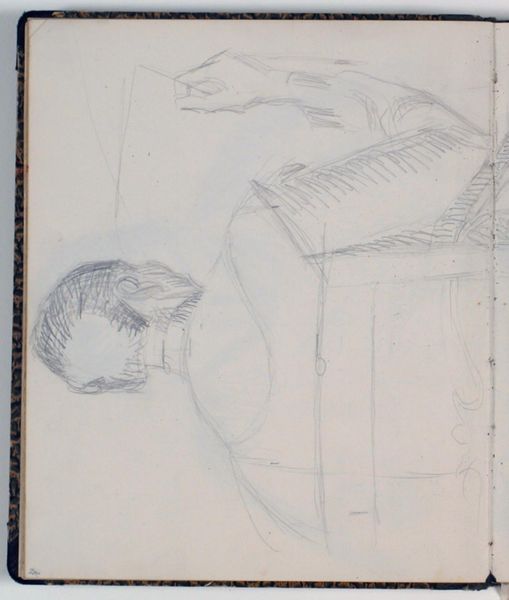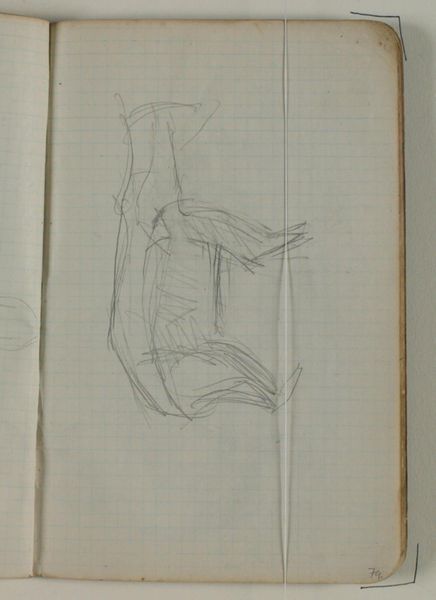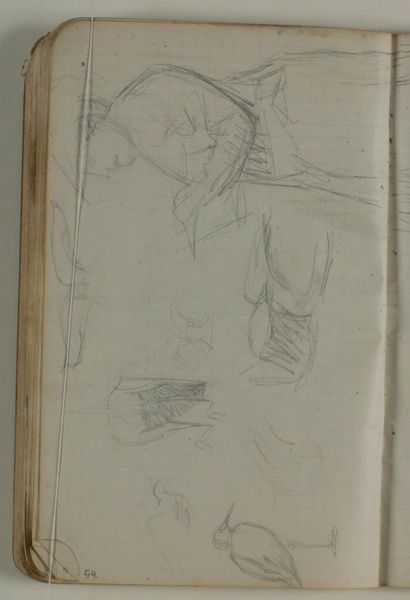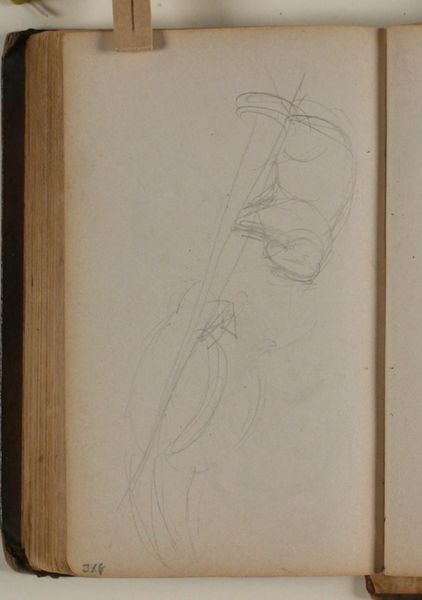
drawing, pencil, graphite
#
drawing
#
figuration
#
pencil
#
graphite
#
realism
Dimensions: 175 mm (height) x 110 mm (width) (bladmaal)
Curator: So, here we have "Skitser af køer," or "Sketches of Cows," by Niels Larsen Stevns, created between 1900 and 1905. It's currently held at the SMK, Statens Museum for Kunst. Editor: Immediately, I'm drawn to the energy of it. Such light, almost fleeting strokes of graphite or pencil on this seemingly aged paper. It gives a feeling of capturing something quickly, like a snapshot of movement. Curator: Yes, and look at the materials themselves. Graphite, pencil—such accessible mediums. It suggests a focus on process, the artist almost documenting a moment. We often overlook how "common" materials shape art making, especially in sketching and the preliminary stages of larger works. Editor: Absolutely! This isn't about grand statements. It’s about labor, the repetitive act of observation and translating that into lines. These are working cows, contributing their milk or muscle—literally and figuratively embodying production and the natural resources from which culture is constructed. What do you think about that, from an artist's perspective? Curator: I think, looking at this, I wonder about Stevns’ relationship with those cows. Are they models? Familiar creatures he knew and loved? The hurried strokes convey affection, don’t you think? They speak volumes, even more than highly labored works of similar subject. I find an intuitive knowing of the animal in the sketch work. Editor: Yes, knowing… or making. Maybe those hurried lines represent not love but labor, reflecting that relentless push of production that shaped agricultural society at the turn of the century. The animal rendered, distilled down to component shapes. Curator: Well, whatever the emotion—labor or love—it all blends. To truly "see" something, and capture it like this, you must enter some dance with it. It has this feeling of the artist sketching in their own farm! Or at least, some familiar pastures... What I'm struck with most is its utter humbleness. There’s poetry here, I really think so! Editor: And that humbleness—both of material and of subject—speaks to a very potent side of material history. The pencil and paper document those lives on the pasture and the labor needed to provide our materials today! Curator: In that small humbleness is a potent observation of culture and connection. Thank you for a new consideration on those sketches.
Comments
No comments
Be the first to comment and join the conversation on the ultimate creative platform.
